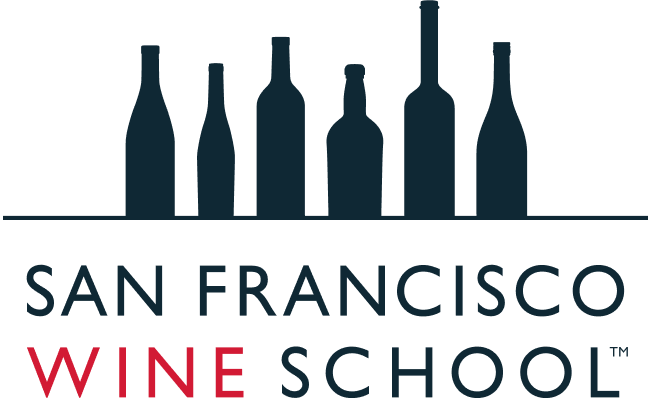Best known for her UC Davis research group's pioneering use of DNA typing in differentiating Vitis Vinifera varieties and elucidating their parentages, Carole Meredith's first career has helped in understanding much of what Cabernet Sauvignon, Chardonnay, Syrah, and Zinfandel is…and was. Professor Emerita at its Dept. of Viticulture and Enology since her 2003 retirement from this August wine research facility, Meredith no sooner dove into winemaking with her husband Stephen Lagier, himself a veteran of the equally influential Robert Mondavi Winery, from and with their Lagier-Meredith estate vineyard in Mount Veeder. Through mutual acquaintance with winemaker Aaron Pott (the subject of a future Insider Interview) grew my two visits to their estate, the last of which this Insider Interview is culled.
Ampelography is a unique and narrow field of endeavor. What inspired you to pursue it?
I didn't pursue it as such. Ampelography is the traditional method of distinguishing grapes by the appearance of their leaves, a very diagnostic process hailing from the old Greek 'ampelos'. There always had been an element of subjectivity to it with many ampelographers differing with no set way of adjucidating their disputes until DNA methodology came along. Just as with humans, DNA testing compares a candidate with the DNA of another, as with grapes it compares to another from an existing database. With humans you compare the DNA with a database or that with a strong suspect. That's how we got started in grape DNA, we were starting to clarify the identity of some varieties grown in California thought to be misnamed, with an unknown variety or one that was carrying the wrong name. For example, Melon was for a long time in California referred to as Pinot Blanc which we confirmed with DNA. With Zinfandel we finally found it in Croatia under the guise of a Croatian name. What we did that I found the most interesting was using those DNA profiles to determine how many wine grapes are related to each other and to find their genetic and geographic origins. The first example was in 1997 when we serendipitously found Cabernet Sauvignon's parents in our database to be amongst the 25 we had; Cabernet Franc and Sauvignon Blanc. Then we targeted all the varieties of northeastern France in a collaboration with researchers in Montpellier who had a vast living repository of varieties to work with including many not planted today. We targeted 300 varieties with ties to that part of France with examples in that collection, and out of that found the parents of about 27 varieties. Most notably out of that study was that 16 of those varieties had the same pair of parents--Gouais Blanc and Pinot.
If you could turn back the clock and alter any major contribution to wine that's still in effect today, what might that be?
The importation of fungal diseases and phylloxera (in the late 19th century) presented a huge problem with explorers unleashing problems upon Europe with their plant discoveries from the New World. Now we've huge lines between regions and countries to prevent the spread of pests, but back then people didn't even know enough about the spread of human diseases.
Why do you reckon wine grapes have been developed and cultivated as identical soldiers in an army rather than expressing their natural tendency towards direct diversity by seed propagation?
Almost all wine grapes will produce seeds, and most of the time you'll produce a grapevine. Just as with humans, inbreeding's not a good thing. Those that are done that way will be inferior, but if you've something you like then it's much better to perpetuate a known than to take a chance on a diverse population. Historically, chance has given us some of our best varieties, but think of the grapes that have popped out with very few to have been chosen as new varieties and those were propagated by vine or cutting. If you've a Cabernet Sauvignon from France you want one to be identical to another grown elsewhere, and if it were propagated by seeds, you'd have something different in any place it was grown; it'd be cheaper but you'd end up with a hodgepodge. Traditionally before phylloxera it was easy to propagate a vine by the method of provinage. If you start with a seed it takes more time to set fruit than a vine or cutting.
How does the grafting of Vinifera onto a rootstock not its own effect the flavor of a resulting wine?
There's no direct effect. Each retains its own genetic identity but indirectly there can be an effect in that the rootstock effects the scion vigor and because the rootstock's acquisition of soil, water, and nutrients. Rootstock is the only part of the plant in contact with the soil, and this then effects the content of the fruit and the flavor of the wine.
What are the advantages and disadvantages in interspersing the planting of vines which fruit is eventually destined to be blended together?
There are no concrete advantages of interplanting but it feels good as it harkens back to the traditional way of growing vines before vines were uniform, so I can understand why people want to do it. Wine is tied to our connection to tradition. Certainly farming is much easier when different types are kept in separate rows; differing vines don't necessarily ripen at the same time because of their degree of vigor or other factors.
The reason for adding a small amount of Viognier to Syrah in the northern Rhone valley was originally done, so I've learned, to ensure that the resultant wine would have enough alcohol and body in vintages too cool to fully ripen the region's chosen red variety. While ripening in California's premier wine areas is amongst the least of its concerns, this blending method learned from the French is often applied here. Why?
A lot of times we look to ascribe rational bases to traditional methods. Co-fermentations often came out of traditional vineyards, which were almost always mixed, which is how we got new seedlings. Old vineyards were typically mixtures of varieties with reds and whites together, so it could be that people kept doing it because they liked the results. In the case of Viognier and Syrah, it's thought that the presence of Viognier and white grapes in other traditional blends improved the pigmentation of the wine by 'co-pigmentation'. Syrah has plenty of color of its own with Viognier imparting aroma while in Chianti, with Sangiovese not being a naturally dark grape, white grapes came in usage more to help set color.
For someone so well-schooled and -traveled the question of where it is to settle is a common enough one. What led you and Steven to choose Mount Veeder as your home and vineyard over other areas?
We chose it because we found a place we could afford, and because Steve's a sucker for a view. It was only later that we came to discover that, "it's always better to be lucky than good," as he's fond of saying.
Your Chester's Anvil is a joint venture with the Potts who've a home along the same ridge. What brought you to it?
It happened because a neighbor of ours, Chester Brandlin, had been helped by Steve. Brandlin asked him to disk his vineyard, and wanted to pay him for it though he refused and told him that instead he'd take an old anvil sitting in his shed. A short while later he called Steve telling him he hadn't a home for his Zinfandel asking if he'd take it on. Steve wasn't inclined to buy it as our Lagier-Meredith label is solely estate-grown. Steve was telling Aaron Pott about it one night when Aaron said to buy it and they'd make wine together. We did it and the name came to us that it should be 'Chester's Anvil'.
And if Mount Veeder vanished, where would you choose to continue to live and work?
I'd probably choose to stay in Napa Valley but the trouble is that with Mount Veeder on the southern side it's the coolest and is similar to Carneros, but with shallow soils and giving small berries with intense flavors--a winning combination. I'd probably stay on the western side for its level of rain and greater vegetation. But if not Napa then the Santa Cruz Mtns. which has a lot in common with Mount Veeder.
Human genetics don't exclusively dictate the outcome of a person's life. How does the variable nature of genetic outcome in humans resemble or differ from that of wine grapes?
It's not outcome, it's nature v. nurture. With humans you get your genetics from parents, and where and whom you are raised you get nurture. Where and how grapes are grown make the difference. The choice of variety dictates the range of potential, location is the profound influence of environment or terroir modulating the fruit composition, and how it's grown is the farming which broadly influences everything but is last because it can't fundamentally change those first two steps.
Leaving behind the scientific for the philosophic, how do virtue and happiness play their parts in wine?
Wine is consumed in a social setting and that makes people happy. Virtue is your inherent moral code and wine has nothing to do with it. The more you think and walk amongst your vines, the better off they're going to be. Small vineyards express more of their potential then large vineyards because the vintner spends more time tending to them.
What were your most pleasing and disheartening single experiences in being served wine in restaurants or bars?
A couple of years ago Steve and I went to dinner in Napa Valley with friends. We'd all brought wines to dinner, and one of our friends brought wine from their property. The sommelier didn't know who we were, that the producer of the wine was sitting at the table, and the somm passed judgement on the wine as being corked and oxidized which it was neither; it was an excellent example of a 10-year old wine. We were dumbfounded and we've never been back. The best experience has been at La Toque in Napa. Their wine pairing menu is done fantastically and we've discovered several good wines through that. Owner/chef Ken Frank being a great wine guy has a lot to do with that.
Check out our full schedule of programs, workshops and public events. Private, customized experiences and corporate training is also available.
Learn more about viticulture with our Viticulture and Enology Workshop


